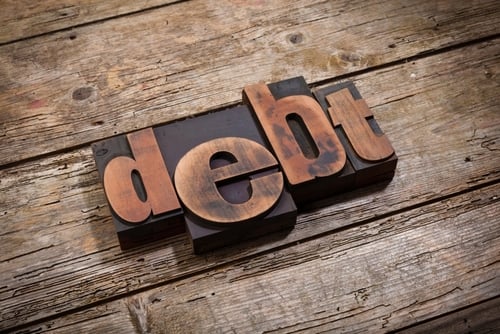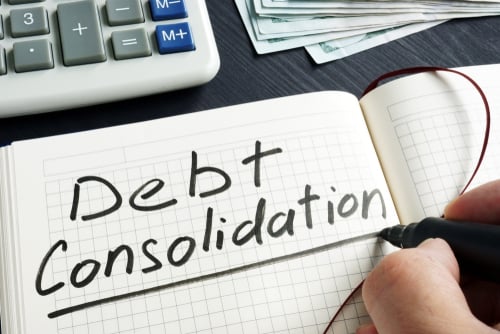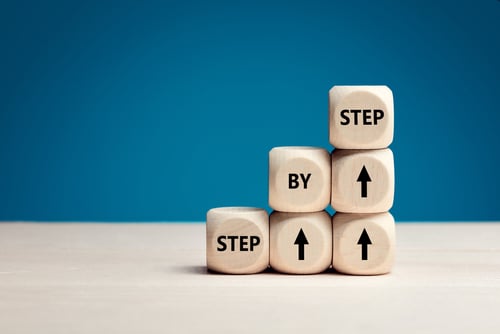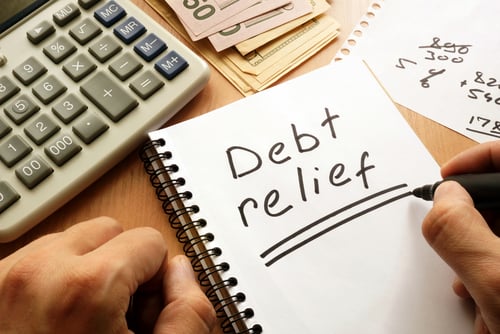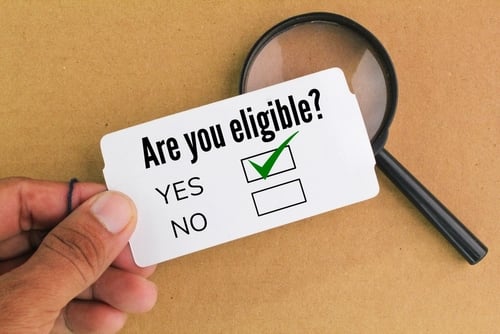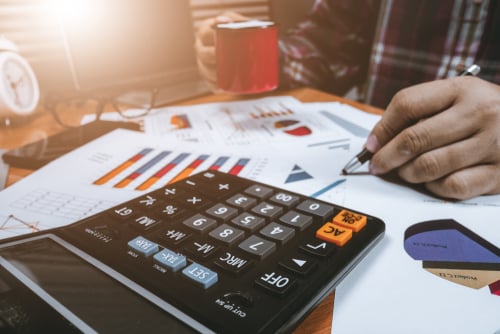Credit Card Relief
To consolidate multiple debts through a Debt Management Plan (DMP). The process of initiating a DMP begins with a credit counseling session. During this 45-90 minute session, you will receive actionable advice from a credit counselor regarding options toward reducing your credit card debt and controlling expenses customized to your specific financial situation.
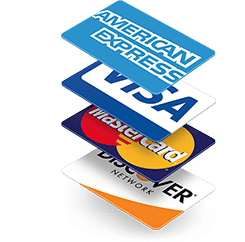
Two Common Approaches to Credit Card Relief
The most common approach is the Debt Management Plan (DMP). If you carry several high interest rate credit card accounts with significant balances, a DMP can make a lot of sense and provide you with credit card debt relief.
In a typical DMP, your counselor will negotiate lower interest rates and lower monthly payments with your creditors. Additionally, instead of making several individual monthly payments toward various credit cards, you make only one streamlined payment to your credit counseling agency, who then allocates funds properly to your various creditors.
The downside is that any account that goes into the DMP is immediately closed and there is a near-term negative effect on your credit score. However, with consistent regular payments, your score will recover. Completing a DMP takes time – usually three to five years – but the eventual rewards of a debt-free lifestyle and improved credit profile are worth the necessary commitment.
ABC
Debt Consolidation Loans are another common approach. These are loans taken out for the express purpose of paying off high-interest credit card and other unsecured debt. Zero-percent or low-interest rate introductory credit card promotions are commonly utilized in this scenario – but as we all know – those attractive introductory rates don’t stay low forever.
If you think it will take longer than the introductory period to fully pay down your debt, an experienced debt consolidation professional can find you the most attractive debt consolidation loan by negotiating on your behalf for a lower interest rate and monthly payment at various banks, credit unions and other active lenders.
The caveat here is if you qualify – that is, hopefully your credit profile hasn’t been too damaged from late payments, delinquencies and a high credit utilization percentage. Additionally, whereas credit card debt is unsecured (not backed by collateral), debt consolidation loans often are secured, so failure to pay could result in losing your home, car, or other secured asset.
Two More Approaches When Making Payments Has Become Difficult
If you’ve fallen behind on your credit card debt, you may want to pursue debt settlement. In a debt settlement, a creditor accepts a lump sum payment in the area of 50-80% of the full balance owed, as the bank recognizes that delinquent accounts may continue deteriorating toward charge-off status and become worthless, non-recoverable assets.
Though experienced debt settlement companies are experts at negotiating with creditors, they often charge significant fees that eat into the overall savings achieved. Still, despite the fees, damage to your credit profile (settled accounts remain on your credit report for seven years) and the fact that creditors are under no legal obligation to accept settlement offers, debt settlement provides a worthwhile option to many.
Bankruptcy represents the last resort option for those in need of a fresh start financially. For an individual with limited assets to be confiscated and sold to pay off creditors, many debts can be discharged under Chapter 7. For someone who prefers to protect assets, filing for Chapter 13 and arranging for a three- to five-year payment plan of certain credit card debts with the remainder of debts discharged upon completion could make sense. The problem is that bankruptcy remains on a credit profile for ten years, so most ensuing attempts to secure credit at favorable terms will be severely hampered for the better part of a decade.
Talk to a Professional About Credit Card Debt Relief
Contact us here at United Settlement, and we will help you navigate these waters and arrive at the best credit card debt relief approach for your specific financial situation.

Credit Card Relief FAQ
High interest rate unsecured credit card debt revolves month after month, accumulates significant interest expense and becomes very expensive over time. Therefore, the issue of how to pay off credit card balances is an important one. One of the more popular approaches to paying off credit card debt is the Avalanche Method, which involves organizing your various credit cards by interest rate, ranking them from highest to lowest. Regardless of the respective balances on the cards, the credit card with the highest interest rate is assigned the highest priority in the repayment process. After making certain to make the minimum monthly payment on each other card, determine the greatest amount that you can pay on the highest interest rate card, and make that payment. Do the same thing the following month, and in each successive month, until the highest priority card is fully paid off. Repeat the process with the second-highest rated card, continuing to make minimum monthly payments on all remaining cards. Each time a card is fully paid off, there will be more money to pay off the fewer, remaining cards. Another popular approach to paying off credit card debt is the Snowball Method, which involves organizing your various credit cards by their balances owed, ranking them from lowest to highest. Regardless of the respective interest rates on the cards, the credit card with the lowest balance is assigned the highest priority in the repayment process. After making the minimum monthly payment on every other card, pay the greatest amount that you can afford on the card with the lowest balance. If necessary, do the same thing the following month, and until the card with the smallest balance is paid in full. Repeat the process on the card with the second-lowest balance, using the extra money that had been going to the previous lowest-balance card and applying it there. Although the Snowball Method does not save as much interest expense over time as does the Avalanche Method, The Snowball Method is better suited for those individuals who need the motivation of quicker victories to maintain the discipline required to pay off a large pile of credit card debt.
The easiest way to consolidate credit card debt is through a debt consolidation loan, which can take the form of a personal loan or a low interest rate promotional balance transfer. If you carry multiple credit card debt balances spread out among a variety of different creditors, pursuing a credit card consolidation loan can make a lot of sense. Simplifying the number of payments down from a number of different creditors to just one single creditor makes the monthly process of paying credit card bills easier. In addition, you’re also likely to save money in the form of lower interest expense per month, and this can allow you to pay off more of the principal owed, thereby leading you out of debt in less time. Introductory promotional rate credit cards offering balance transfers represent one way to consolidate credit card debt, though these promotional rates often expire within 12-18 months and APRs go much higher after the promotional rate expires. For longer repayment duration of a few years or more, fixed-rate credit card consolidation loans (also commonly referred to as personal installment loans) provide a viable solution.
Credit card debt negotiation can be tricky, as communications with creditors must be carefully crafted, with proper prioritization given to those creditors and collection agencies that have the potential to cause the most problems for you – both legally and financially. The negotiation process must be accomplished while trying to save as much money and time as possible, along with mitigating the ongoing damage to your credit score and profile. Throughout debt settlement negotiation, it is critical to know what information to disclose, the manner of structuring offers, and the timing of such offers. This ongoing process of communication and negotiation is often best handled by a reputable debt settlement firm staffed with experienced professionals.
Credit card balance transfers have been around for awhile – but they remain as useful as ever for paying off higher-interest rate credit card debt. The best balance transfer credit cards include a 0% promotional rate for up to twenty-four months with modest fees attached (0-3% balance transfer fees), though even an introductory promotional rate of 3% for twelve months plus a 3-4% fee will easily represent an interest expense savings over an existing credit card balance with an APR closer to 18%. Meantime, interest rates on personal installment loans are frequently lower than those attached to credit cards, so for those individuals carrying multiple cards with multiple payout dates, utilizing a personal loan to simplify the repayment process can make sense. Keeping track of multiple cards with multiple payment cycles can get messy and lead to inadvertent late fees and/or missed payments, both of which can harm a credit score and profile. Apart from the convenience of streamlining the repayment process into one single monthly payment, the interest expense savings that can result from paying off credit card debt with funds raised through a personal installment loan makes good financial sense.
There are many forms of debt relief, including bankruptcy, debt settlement, debt management plans and debt consolidation. In the cases of bankruptcy and debt settlement, accounts have already run delinquent and remain unpaid. Bankruptcy is designed to give the debtor a fresh start, but at the cost of a badly wounded credit history and credit score, and any accounts that are wiped away of obligation are no longer available to the debtor. In debt settlement, a creditor may agree to a reduced lump sum in exchange for wiping away an otherwise unrecoverable delinquent outstanding balance, but this too stains a credit report and closes the settled account, with the creditor often reporting it to the credit bureaus as “paid in full.” Accounts that are entered into a debt management plan are also closed, with a counseling agency handling one monthly payment at reduced interest rates for all included accounts. Only in the case of a debt consolidation loan, when new funds are accessed and immediately deployed to pay off existing credit card accounts will the accounts remain open.
Get Debt Relief
Speak with licensed debt specialists dedicated to guiding you toward financial stability every step of the way.

Ready To Get Started?
See if you qualify for debt relief. Get a Free savings estimate to see how quickly you can be debt free.
Embrace financial freedom with our tailored solutions, expert guidance, and unwavering commitment to your success.
Experienced Professionals
Our experienced team has helped thousands of clients successfully eliminate debt and regain financial freedom.
Customized Solutions
We know every financial situation is different, so we design personalized debt relief plans to fit your specific needs and goals.
High Success Rate
Our proven debt relief strategies deliver real results. With a strong track record of success, we help clients achieve lasting financial stability.
Confidential Consultation
Your privacy is our priority. All debt relief consultations are 100% confidential and handled with the highest level of discretion.
Explore other blogs
